#borromeo palace
Text

Palazzo Borromeo - ITALIA
#palazzo borromeo#borromeo palace#palacio borromeo#isola bella#island#isla#lago maggiore#lake maggiore#stresa#verbano cusio ossola#piedmont#italia#italy#europe#europa
432 notes
·
View notes
Text

Prince Albert II of Monaco, Princess Charlène of Monaco, Prince Jacques of Monaco and Princess Gabriella of Monaco, Princess Caroline of Hanover, Andrea Casiraghi, Tatiana Santo Domingo, Charlotte Casiraghi, Raphaël Elmaleh, Balthazar Rassam, Pierre Casiraghi, Beatrice Borromeo, Stefano Casiraghi, Francesco Casiraghi, Princess Alexandra of Hanover, Ben-Sylvester Strautmann, Princess Stéphanie of Monaco, Louis Ducruet, Marie Ducruet and Pauline Ducruet pose for an official portrait as they attend Prince Albert II of Monaco's 66th birthday celebrations, at The Prince's Palace in Monaco -March 14th 2024.
📷 : Palais Princier de Monaco.
#prince albert ii#princess charlene#prince jacques#princess gabriella#princess caroline#andrea casiraghi#tatiana santo domingo#raphael elmaleh#balthazar rassam#charlotte casiraghi#pierre casiraghi#beatrice borromeo#stefano casiraghi#francesco casiraghi#princess alexandra#ben sylvester strautmann#louis ducruet#marie ducruet#pauline ducruet#princess stephanie#monegasque princely family#monaco#2024#march 2024#66th birthday#prince albert ii of monaco's 66th birthday#royal children#my edit
21 notes
·
View notes
Text




Happy 36th birthday to Pierre Casiraghi!
Born on 5 September 1987, Pierre Rainier Stefano Casiraghi is the youngest child of Caroline, Princess of Hanover, and her second husband, Stefano Casiraghi, a grandson to Prince Rainier III of Monaco and Grace Kelly and a nephew o Prince Albert II. Pierre is currently eighth in the line of succession to the Monegasque throne.
Pierre married journalist Beatrice Borromeo in a civil ceremony on 25 July 2015 in the gardens of the Prince's Palace of Monaco. The religious ceremony took place on Isolino di San Giovanni on 1 August 2015. The couple has two children: Stefano (6) and Francesco Carlo Albert (5).
19 notes
·
View notes
Text
Stunning lakes and mountains

We've driven through Switzerland along roads cutting through the mountains and as we came out of each tunnel, the views were stunning. But nothing could have prepared us for the picture perfect Lake Maggiore in Italy.

Our campsite sat at the top of a hill just a stone's throw from the west coast of the lake. From the site in Baveno the view was incredible and we never tired of this massive stretch of water.
We took a boat out to the Borromean Islands - Isola Bella, Isola Pescatori and Isola Madre. These small islands are owned by the Borromeo family and a palace and tiered garden on Bella was built for Countess Isabella Borromeo by her husband.
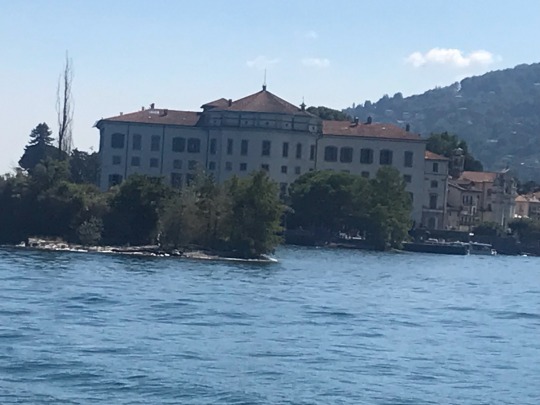
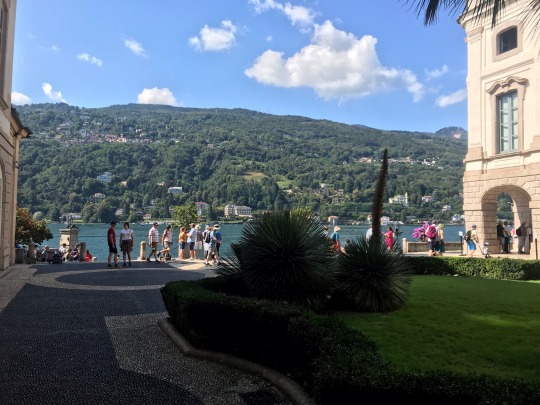

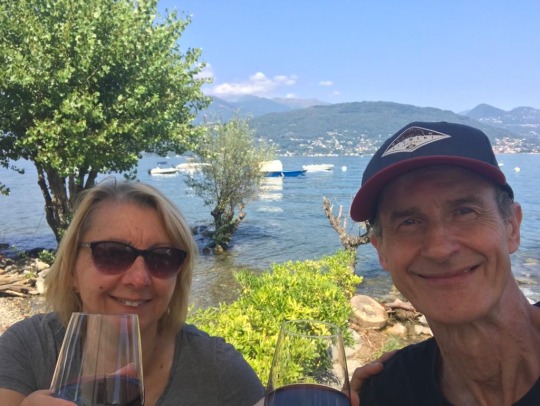

After exploring Baveno with its historic church and lake front park, we walked to nearby Stresa, the main tourist area. There we found winding lanes of shops and cafes and a trip to Italy wouldn't have been complete without sampling the ice cream. There was every conceivable flavour and even a good range of dairy free options for me.
As we are staying near water, we've heard all the stories about the local and visiting mosquitoes that love to feast on tourists. Alex is plagued by these biting insects and has ended up in A and E in the past after being bitten. So he was taking no chances on this trip.

He's kitted himself out with an impressive armoury of weapons - sprays, wipes, plug ins and wrist bands - and declared war on the whole mosquito population.
Personally, I think he has gone a little over the top but then I would say that when he's being targeted for breakfast, lunch and dinner while I'm being largely ignored. But annoyingly, the little blighters are running the barricades and getting through.
Maybe he'll have more luck at Lake Como where we have pitched up now. Again, we are staying close to the lake shore and this area is no less impressive although more crowded.

2 notes
·
View notes
Text
Isola Bella, Italy

The picturesque lake in today’s image is Isola Bella, which translates to Beautiful Island, one of the Borromean Islands on Lake Maggiore in the north of Italy. The island is one of Italy’s national treasures, a favourite visitor attraction famous for its 17th-century Baroque palace and extensive Italian-style gardens which span ten terraces. Isola Bella is an obvious choice if visiting the Borromean Islands, and not to be missed if you want unparalleled views of the lake and its surroundings.
The island was the project and passion of the Borromeo family, who launched the grandiose project that led to the creation of the Palazzo Borromeo and the manicured gardens filled with statues, water features and grand flower arrangements. What started as an island inhabited by fishermen, with just two small churches and a few vegetable plots, transformed over 400 years into the breathtaking island we know today. Visitors can explore many parts of the opulent interior of the palace, which are a stark contrast to the narrow, cobbled streets of the island’s village.
4 notes
·
View notes
Text
One of the most popular spots in Bologna is the Palazzo dell'Archiginnasio, the Archiginnasio Palace. From 1563 to 1805 it was the building of the University of Bologna, the oldest university in the world. Today it is used as a public library. The palace is located in Galvani Square and contains thousands of works of manuscripts, letters, books, drawings, and prints.
It is the largest library of the Emilia-Romagna region. In the 16th century, Bologna is now under the administration of the Papal State. Pope IV. Pius ordered some buildings to be arranged, including the central Maggiore Square, and the construction of new buildings in the city. In 1562, he organized the construction of the Archiginassio Palace through his ambassador, Cardinal Charles Borromeo.
Archiginnasio Palace
The purpose of this building is to gather the University of Bologna, which has departments such as law, medicine, philosophy, mathematics and physics, into a single building. The building, which was built quickly for this purpose, was put into service in 1563. Until 1805, the university used this building, but then it was moved to its present building, Palazzo Poggi.
The Archiginnasio Palace has two floors and, like almost all buildings in Bologna, has porticoes. In the inner garden of the palace, there is Santa Maria dei Bulgari, which is no longer used as a church. More than 6,000 coats of arms are found on the walls of the building. These crests are the crests of the cities from which the students, who are the presidents of the student clubs, come from.
Among them are the coats of arms of some academics. One of the most striking points of the building is the Teatro Anatomico. This amphitheater, which is used for anatomy lessons, was built in 1636. Busts of many scientists, especially Hippocrates, are also in the amphitheater.
Address: Piazza Galvani 1, 40124 Bologna, Italy
Nearby Places: Chiesa di Santa Maria della Vita, Teatro Anatomico
0 notes
Text
One of the most popular spots in Bologna is the Palazzo dell'Archiginnasio, the Archiginnasio Palace. From 1563 to 1805 it was the building of the University of Bologna, the oldest university in the world. Today it is used as a public library. The palace is located in Galvani Square and contains thousands of works of manuscripts, letters, books, drawings, and prints.
It is the largest library of the Emilia-Romagna region. In the 16th century, Bologna is now under the administration of the Papal State. Pope IV. Pius ordered some buildings to be arranged, including the central Maggiore Square, and the construction of new buildings in the city. In 1562, he organized the construction of the Archiginassio Palace through his ambassador, Cardinal Charles Borromeo.
Archiginnasio Palace
The purpose of this building is to gather the University of Bologna, which has departments such as law, medicine, philosophy, mathematics and physics, into a single building. The building, which was built quickly for this purpose, was put into service in 1563. Until 1805, the university used this building, but then it was moved to its present building, Palazzo Poggi.
The Archiginnasio Palace has two floors and, like almost all buildings in Bologna, has porticoes. In the inner garden of the palace, there is Santa Maria dei Bulgari, which is no longer used as a church. More than 6,000 coats of arms are found on the walls of the building. These crests are the crests of the cities from which the students, who are the presidents of the student clubs, come from.
Among them are the coats of arms of some academics. One of the most striking points of the building is the Teatro Anatomico. This amphitheater, which is used for anatomy lessons, was built in 1636. Busts of many scientists, especially Hippocrates, are also in the amphitheater.
Address: Piazza Galvani 1, 40124 Bologna, Italy
Nearby Places: Chiesa di Santa Maria della Vita, Teatro Anatomico
0 notes
Text
The Palace with a pretty fountain
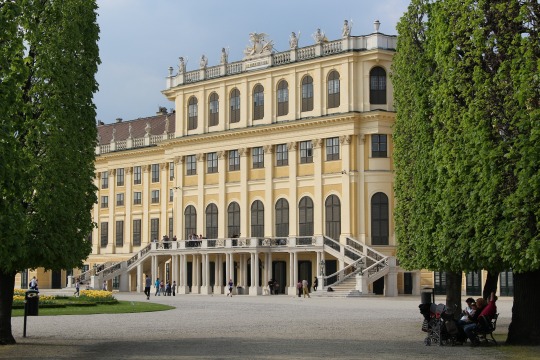
The history of Schönbrunn Palace goes back to the Middle Ages, but becomes clearer from the 14th century onwards. According to legend, Emperor Matthias of Habsburg, who ruled the Holy Roman Empire for seven years at the beginning of the 17th century, was responsible for the present name.
The short-lived emperor was in the vicinity of the Katterburg hunting lodge when he discovered a fountain that he thought was pretty enough to identify it with this name: in German, Brunn means fountain and schön means pretty.
What had been a hunting lodge in the forests surrounding Vienna evolved into the summer residence of the Austrian royal family, the undisputed holders of Germanic imperial dignity until the dissolution of the Empire, which was followed by the union between Austria and Hungary at the beginning of the 19th century.
In the meantime, Austria was involved in several wars throughout the 17th century. In the Thirty Years' War, when the Swedish army was seen arriving at the gates of Vienna. Against Hungary, which wanted to obtain its effective independence. And against the Ottoman Empire, which culminated in 1683 with the Turkish siege of Vienna, which ended up being saved thanks to Polish and Cossack troops.
But Schönbrunn, a name that was officially used for the first time when the widow of Emperor Ferdinand II, Eleonora Gonzaga, took up residence between 1637 and 1642, was not spared from the siege. It was the architect Johann Bernhard Fischer von Erlach who was involved in this transformation, commissioned by Emperor Leopold I, contributing significantly to the current appearance.
Fischer von Erlach was one of the most prolific architects of the Austrian Baroque and his is the conception of the Karlskirche in Vienna, easily recognizable by the two twisted columns that frame the facade of this church dedicated to St. Charles Borromeo. Schönbrunn remained unfinished due to the sudden death of Joseph I (1711) and was the residence of his widow Wilhelmine Amalia.
In 1728 Emperor Karl VI took over the work and subsequently handed it over to his daughter Maria Theresia. The Empress commissioned Nikolaus Pacassi to adapt it to the rococo style and set up her summer residence.
The first thing she ordered was the expansion of the imperial apartments in the east wing with audience rooms and salons for Maria Theresia and her consort, Franz Stefan von Lothringen, which could be occupied as early as 1746. The coronation of Maria Theresia's husband as Roman-Germanic emperor in Frankfurt in 1745 gave Schönbrunn a new impetus to become an imperial summer residence, with a series of new buildings.
One of the characteristics of the palace is its yellow color, a shade identified with Schönbrunn itself as one of its most unique features. But the palace is not just one building. Its immense park and the woods that surround it give room to other unique pieces: the Palmenhaus, a greenhouse of exotic plants, Roman ruins, monumental fountains, a zoo ... All presided over by the Gloriette that stands at the top of the park.
It was not until the late nineteenth century that Emperor Franz Joseph, who was born and died in Schönbrunn, lived there all year round and, with him, one of the most famous residents of the palace, Princess Elisabeth of Wittelsbach, Duchess of Bavaria, better known as Sissi.
1 note
·
View note
Video
Laggo Maggiore - Borromeo Palace par ☆ Sonia ☆
#italy#italia#laggo maggiore#lake major#lac majeur#lake#nature#trip#vacances#holidays#borromeo palace#art#palace#isle#island#statue#trying to share my pictures#p
3 notes
·
View notes
Photo

Palazzo Borromeo, Isola Bella, Lago Maggiore, Italy,
Massimo Listri Photography
#art#design#interiors#interiordesign#isola bella#lago maggiore#italy#palazzo#palace#palazzo borromeo#isolabella#luxury houses#style#history#luxury lifestyle#luxury homes#massimo listri
189 notes
·
View notes
Text
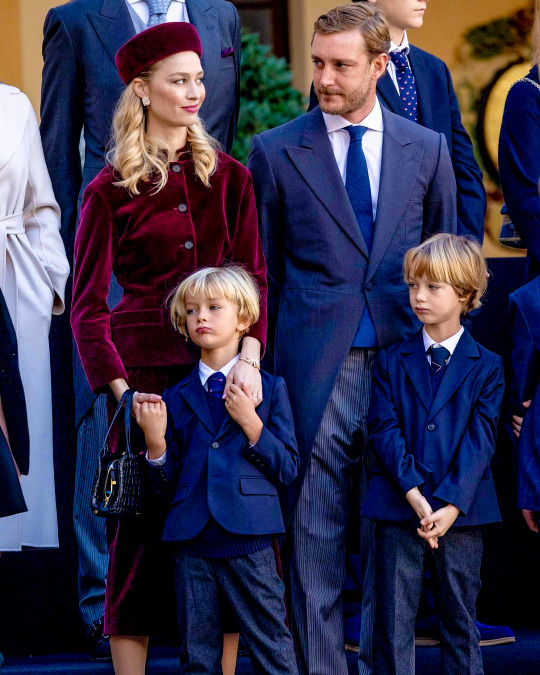


Pierre Casiraghi, Beatrice Borromeo, Stefano Casiraghi and Francesco Casiraghi attend the Monaco's National Day 20230, at The Prince's Palace in Monaco -November 19th 2023.
#pierre casiraghi#beatrice borromeo#stefano casiraghi#francesco casiraghi#monegasque princely family#monaco#2023#november 2023#monaco's national day#monaco's national day 2023#royal children#my edit
23 notes
·
View notes
Text




Happy 8th wedding anniversary to Pierre Casiraghi and Beatrice Borromeo!
The couple were married in a civil ceremony on 25 July 2015 in the gardens of the Prince’s Palace of Monaco. The religious ceremony took place on Isolino di San Giovanni - an island that belongs to Beatrice’s family - on 1 August 2015. They have been in a relationship since May 2008.
Pierre and Beatrice have two sons: Stefano (6) and Francesco (5).
21 notes
·
View notes
Text


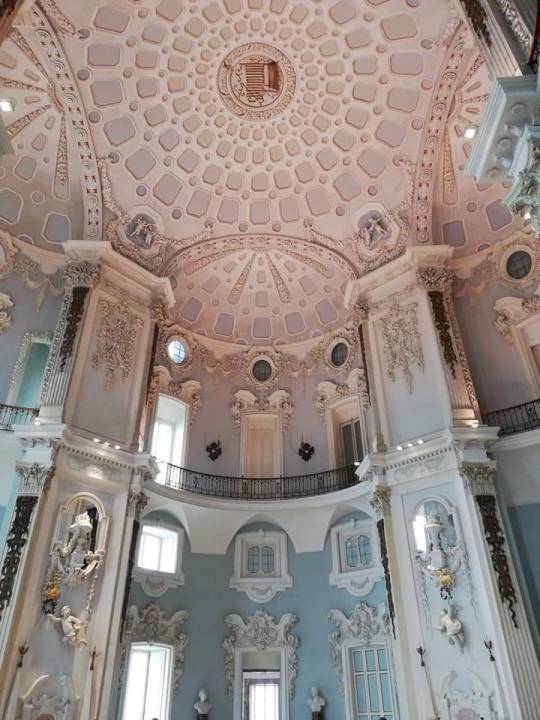

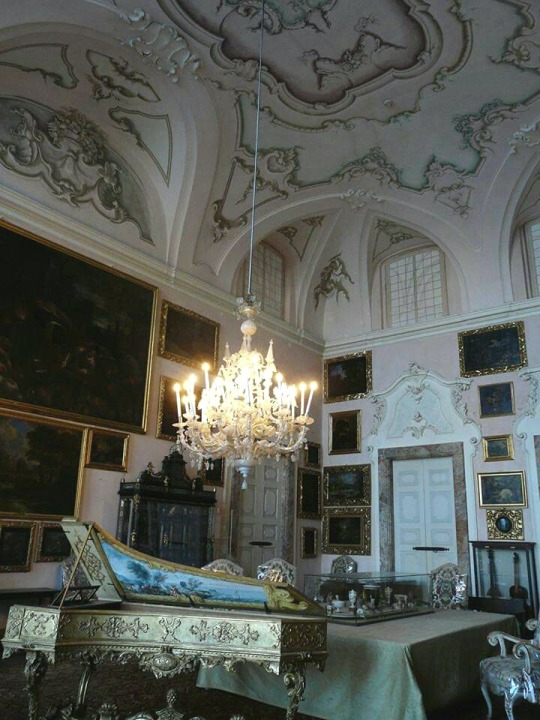
Palazzo Borromeo - Isola Bella (Northern Italy); 1632-1652
#italy#italian palace#palaces#royal palaces#palazzo borromeo#milan#palace borromeo#lago maggiore#isola bella#northern italy#italian art#italian architecture#baroque style#baroque#baroque architecture#italylandscape#architecture#1600s#1600s art#art#ceiling#neoclassical#aesthetic#interiors#interior design#interior#gorgeous#beauty#beauty will save the world#building
109 notes
·
View notes





